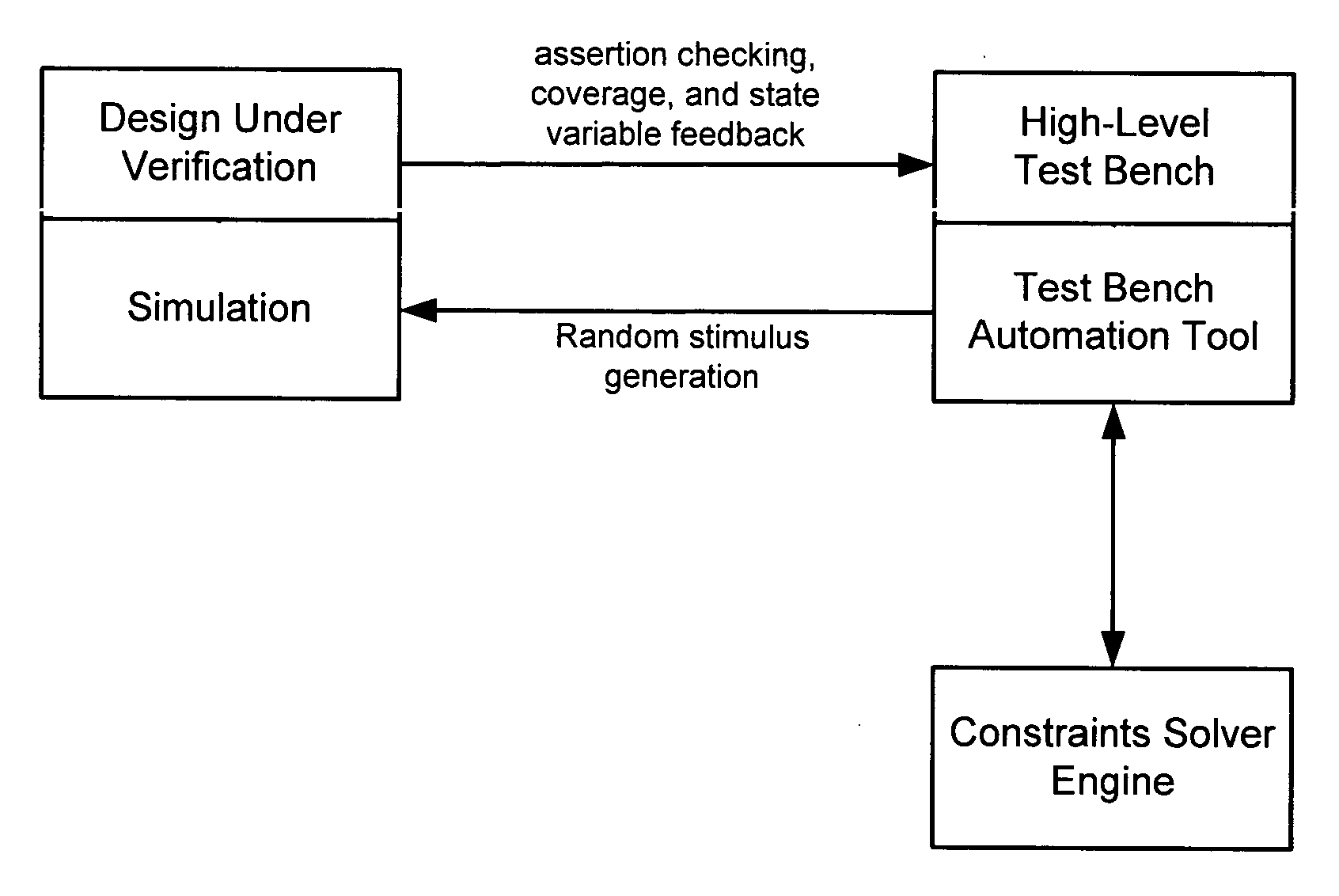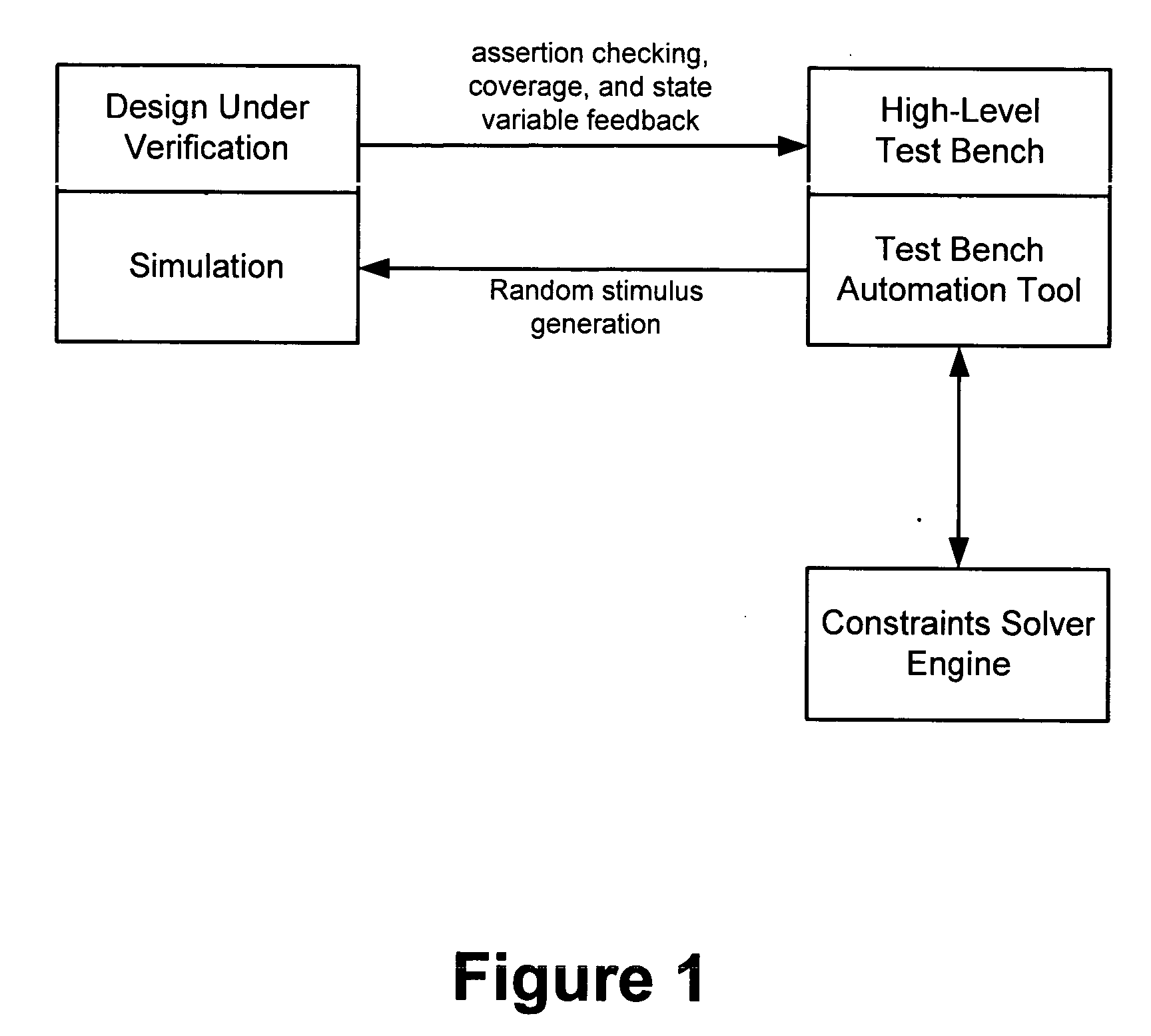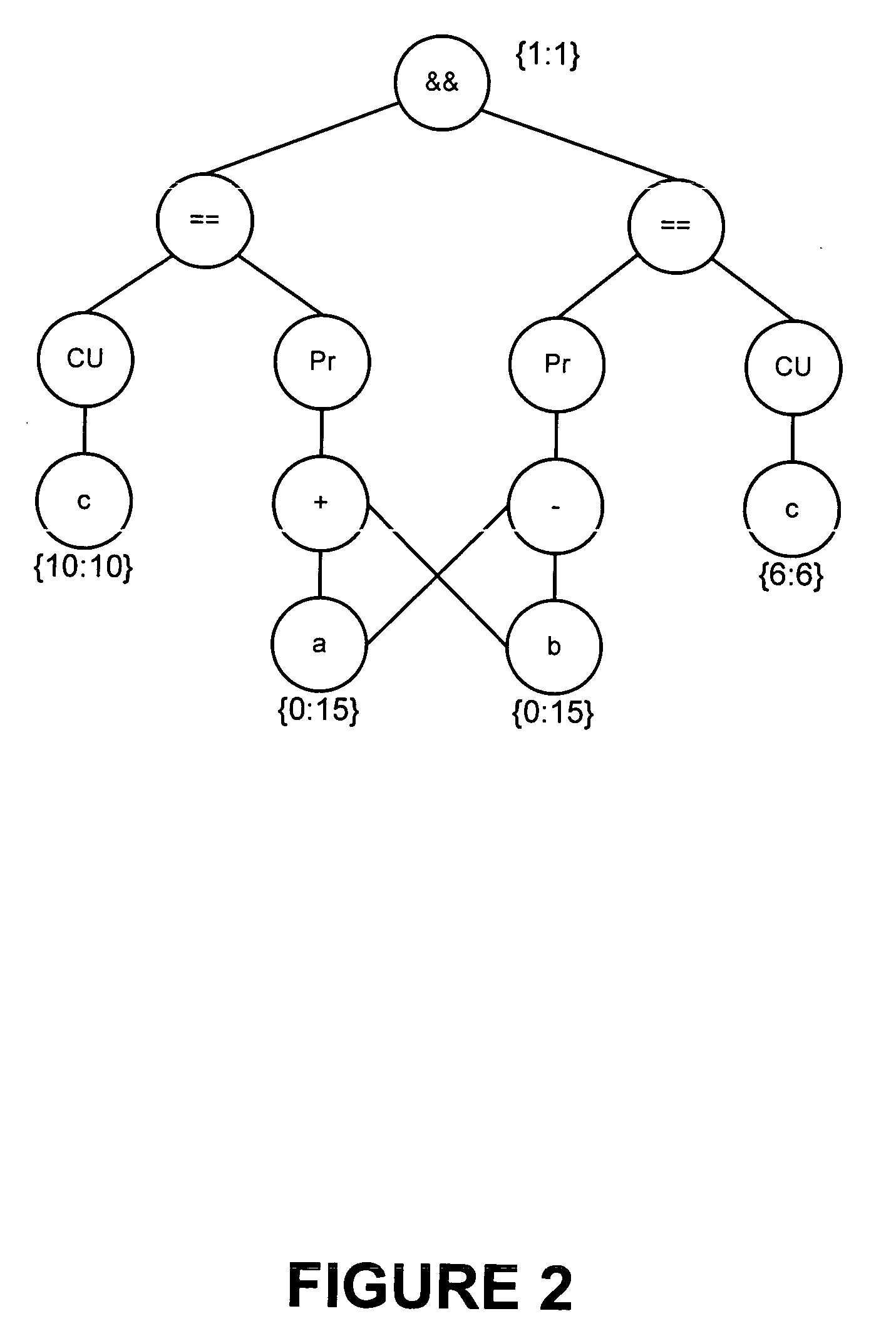Method and apparatus for solving bit-slice operators
a bit-slice operator and operator technology, applied in the field of solving sets of constraints, can solve problems such as complex problems such as finding a variable assignment that satisfies them
- Summary
- Abstract
- Description
- Claims
- Application Information
AI Technical Summary
Problems solved by technology
Method used
Image
Examples
example 1
rand bit[3:0] a, b;rand integer c;constraint c1 {a + b = = c * 2;}constraint c2 {c > 0;}
Here “a” and “b” are 4-bit unsigned random variables and “c”is a 32-bit signed random variable. Thus, “a,”“b,” and “c” can possibly take, respectively, 16, 16 and 232 values (the integer data type is assumed to be comprised of a 32 bit word). In the OpenVera language, c1 and c2 represent constraint blocks, with each block containing a constraint expression (or constraint). As can be seen, the constraint expression of block c1 is a declarative statement regarding a relationship that must be maintained over the variables “a,”“b,”“c,”and the constant value of 2. The constraint expression of block c2 is a declarative statement regarding a relationship that must be maintained between the variable “c”and the constant value of zero. The constraint solving problem comprises finding values for “a,”“b,” and “c”that satisfies the declarative statements of blocks c1 and c2. Within an OpenVera program, since...
example 3
rand bit [3 : 0] a, b;constraint c1 {a + b = = 10;a − b = = 6;}
example 3 (
written in OpenVera), declares two random variables “a” and “b,” each of which is four bits in width. The constraint block c1 contains two constraints, both of which must be satisfied.
For Example 3, the two constants, 10, and 6, are interpreted as 32-bit signed numbers. The results of the adder and the subtractor are initially unsigned and unbounded in precision due to the type of their operands. The results of the adder and subtractor are converted into 32-bit unsigned numbers using the Precision without wrap (Pr) operators on the outputs of the adder and subtractor. IEEE Verilog HDL interprets mixed signs on the equality operator (e.g., the 32-bit signed constants and 32-bit unsigned results of the adder and subtractor) as unsigned. This is modeled using the cast unsigned (CU) operator on the output of each constant node, that converts the 32-bit signed number of each constant into a 32-bit unsigned number.
As part of the model building process in the present invention, the prim...
PUM
 Login to view more
Login to view more Abstract
Description
Claims
Application Information
 Login to view more
Login to view more - R&D Engineer
- R&D Manager
- IP Professional
- Industry Leading Data Capabilities
- Powerful AI technology
- Patent DNA Extraction
Browse by: Latest US Patents, China's latest patents, Technical Efficacy Thesaurus, Application Domain, Technology Topic.
© 2024 PatSnap. All rights reserved.Legal|Privacy policy|Modern Slavery Act Transparency Statement|Sitemap



